Autonomous working in tree cultivation could still use a boost |
|
| GARDEN AND PARK TECHNOLOGY |
|
|
|
|
 |
| 363 sec |
Smart robotics
Agriculture, horticulture, open-field vegetable cultivation, fruit cultivation, and viticulture are the guiding sectors that point tree nurseries towards robotization. There is certainly still a field lying fallow. It is primarily the pioneers in the sector who use robots like the Oz, the Orio, and the Aigro Up.
| The Aigro Up tool carrier |
We know the real robot: that is 'something' that works autonomously. Additionally, there are a number of tools that substantially contribute to the sustainability and/or reduction of labor in tree nurseries. Such as the KWH EC 2 Mistral; you need to mount it on a spray tank. Or the trunk thickness meter, which we will highlight first.
 | | Pim Deuling |
|
|
AgroWizard trunk thickness meter
In 2022, the startup AgroWizard, active in precision agriculture, introduced a trunk thickness meter for fruit and avenue tree growers. Using a camera, big data, artificial intelligence (AI), and RTK-GPS, this application maps the trunk thickness of trees down to millimeter level, according to the developers. This saves tree growers a lot of time and provides them with real-time insight into their inventory. AgroWizard director Pim Deuling says: 'Since its introduction in 2022, we have made our solution significantly more accurate. Our technology uses camera images to create a 3D point cloud. Based on that, you can make statements about a tree or shrub. Tree growers can therefore expect much more from us in the future in this area!' However, there was initially a need for an automatic trunk thickness meter, preferably one that could be placed on a vehicle that could drive between the rows.
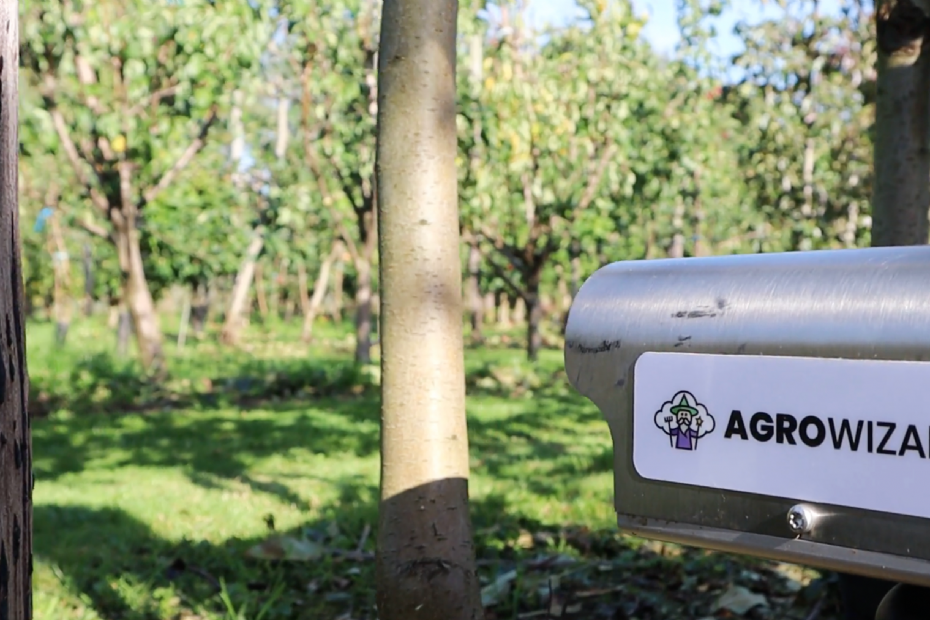 | | The AgroWizard camera module |
|
|
|
|
The trunk thickness meter can be placed on an autonomous tool carrier, such as the Aigro
| |
|
You can also place the trunk thickness meter on a narrow-track tractor, a quad, or an - autonomous - tool carrier such as the Aigro. A 12V connection is necessary. At this time, dozens of growers and farmers around the world are already using the second generation of this application. 'The more stable the platform on which the thickness meter stands, the better our system works and the faster you can drive,' explains Deuling. 'With an unstable platform or lots of bumps, the quality of the images is not as good. One major teething problem in the system has now been fixed. Initially, our trunk thickness meter worked well with trees without stakes or bamboo sticks. Since mid-2024, we have been able to filter the digital information from these 3D point clouds using AI. As a result, it now also works excellently with trees with sticks, as Tree Nursery Udenhout can confirm. But we continue to develop. At the moment, for example, we are training our trunk thickness meter on aged stakes. The "smart" system does not always recognize these stakes, and then the camera measurement may deviate from reality.'
Abemec Oz
In vegetable cultivation, the Oz robot has been used on a large scale for years. It is a small mechanical four-wheel hoe that operates with a chopping mechanism and a static weed string without damaging the crop. In the Dutch tree nursery industry, there are currently about ten Oz robots at work. They are built by the French Naïo Technologies in Escalquens. This robot drives and operates based on RTK-GPS, a GPS system accurate to 2 cm. For this, the tree grower must measure a number of points himself, such as the corners of the plot and the start and end points of the rows. These must be placed in a folder and loaded into the Oz robot. Furthermore, you can program it, for example, to skip certain rows. The dimensions of the robot are 130 by 47 by 83 centimeters (length x width x height). The four-wheel-drive robot weighs 150 kilos and has a capacity of about 1,000 square meters per hour. A leaf guide is mounted along the wheels. At the front, it has rubber flaps to bend branches away. The maximum speed is 1.8 kilometers per hour. It is legally allowed to operate without any human supervision. Further safety requirements, such as fences or wide ditches, are not required. This robot has a lot of power, so even in a closed crop, such as conifers, it can do its job excellently. The crop height forms the biggest limitation with RTK-GPS. A crop height of 3 meters or more makes it difficult for the robot to continue seeing the GPS. In case of wheel slip or a fault, it reports this via a text message to the user. Director Hans Quint of agricultural machinery company Abemec reports that this robot has become more multifunctional since its introduction in the tree nursery, two years ago. For example, the robot also offers applications for attachment parts such as a hoe, a pusher, a seeding element, or a spot sprayer that detects green.
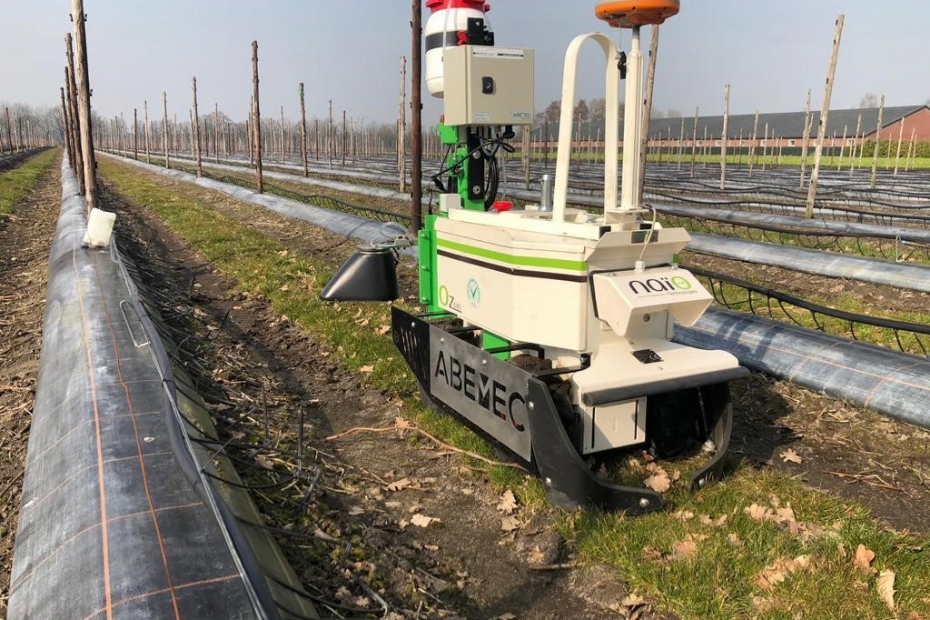 | | The Oz robot |
|
|
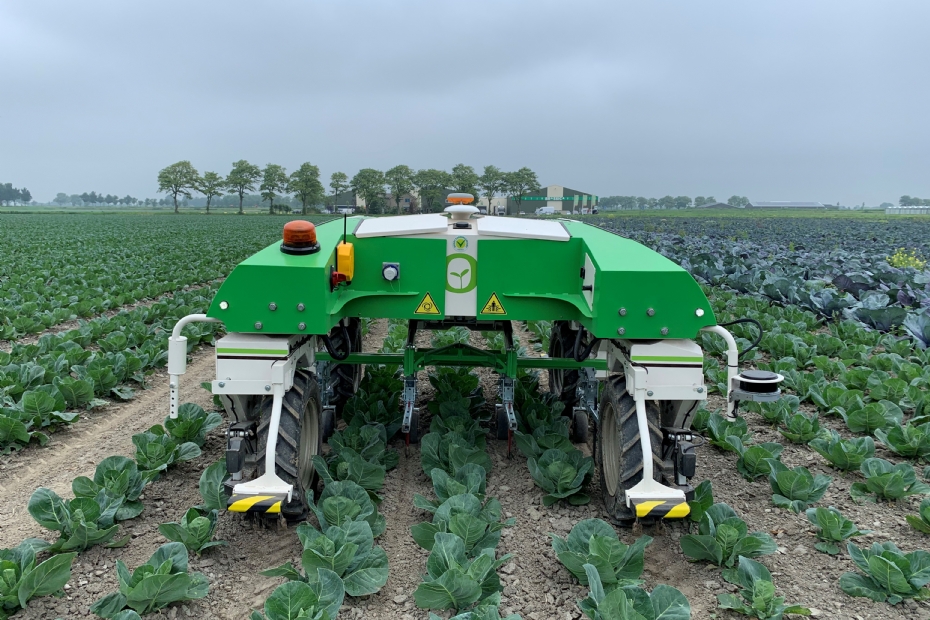 | | The Orio, the larger robot brother of the Oz |
|
|
Orio
The Orio is the larger robot brother of the Oz, also from Abemec. It drives over the crop and is initially made for bed cultivation. The working width is 160 to 200 centimeters and the maximum height is 35 centimeters. This quickly proves too low for tree nursery crops. The safety sensors then activate and the robot stops working. The robot autonomously also removes weeds from the rows. Here, the Graford camera technology is used, a technology that Abemec developed together with Homburg Holland. This system recognizes plants and trees and spares them during the chopping movement. Additionally, the use of various implements such as a harrow or seed machine is possible. This approximately 800 kilo heavy machine, with a lifting capacity of nearly 600 kilos, must be charged for eight hours after its work. The 4wd machine is equipped with lidar sensors for safety and if it drives over 4.5 kilometers per hour, physical boundaries and supervision are not required. Quint: 'You can work well with it in boxwood, boxwood replacements, and conifers, provided the crop is not higher than 35 centimeters. The advantage of such a machine is that you save considerably on manual work in removing weeds.'
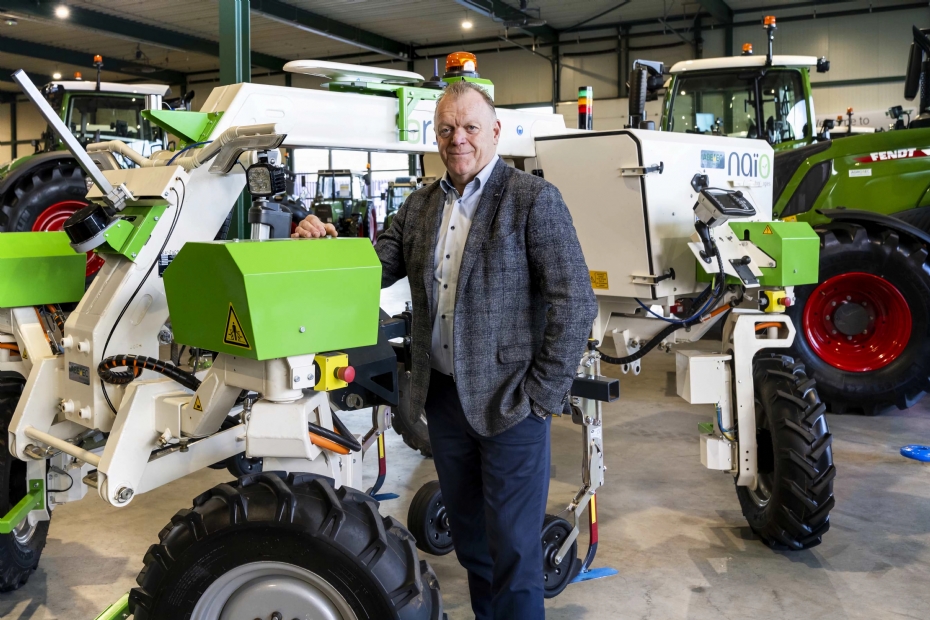 | | Hans Quint |
|
|
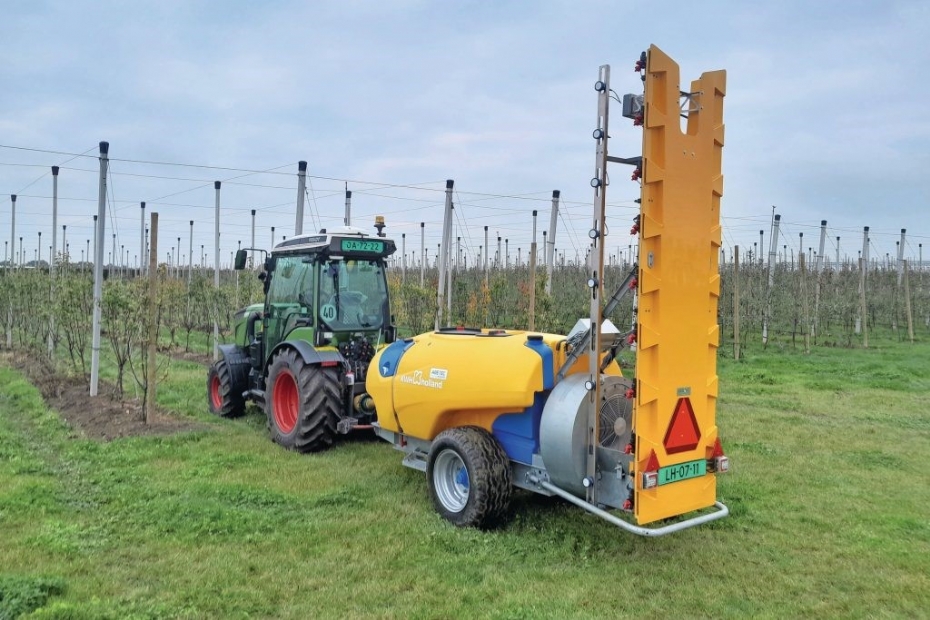 | | The KWH Mistral, now also suitable for tree cultivation |
|
|
KWH EC 2 Mistral
In fruit cultivation, experience has already been gained with the Abemec/KWH Mistral. This spot sprayer can also detect vertical green in hedgerows and avenue trees. Thanks to this invention, you can deal with crop protection agents and foliar fertilizers more sustainably. It is debatable whether this is a robot. The system is actually mounted on a pulled tank. Hans Quint says about this: 'This system works perfectly in fruit cultivation and the expectations for use in tree cultivation are good. From April 2025, we can tell you more about this. The Technical Committee on Technology Assessments (TCT) has assessed this KWH EC 2 Mistral cross-flow sprayer with hole detection system and classified it in the DRT class 99%.'
Aigro Up
The Aigro Up is a versatile autonomous tool carrier. This robot can perform various tasks, such as mowing and weeding. However, you can also use it for other activities. The start-up company
Aigro in Best is already quite advanced in the possibilities for 'row hoeing.' The mowing is done according to the wishes of the growers who use it. For example, the robot maintains 9 to 10 hectares of grass on a tree nursery in Oirschot. Especially between the multi-stems and larger trees, it can keep up with the grass growth; even rain does not hinder this light machine. On flat terrain, the Aigro Up does its job effortlessly. Through an app on your smartphone, you can set a mowing plan, which the robot executes at the press of a play button. Here, for example, you can also regulate the mowing height via the app. The robot has its own wifi network. To do its autonomous work well, the machine uses GPS lines on the plot; you must draw these yourself and set the machine to them. There is also a unit for this tool carrier with which you can autonomously let the machine harrow. This can be interesting for tree growers with SKAL-certified plots. At a tree nursery in Udenhout testing the Aigro Up, they are looking forward to the next version of this electric robot tool carrier that can also hoe. 'An employee drives around the plot with the tractor all week to keep it weed-free. If we can halve that time with a robot, we've already gained a lot,' was the reaction there.
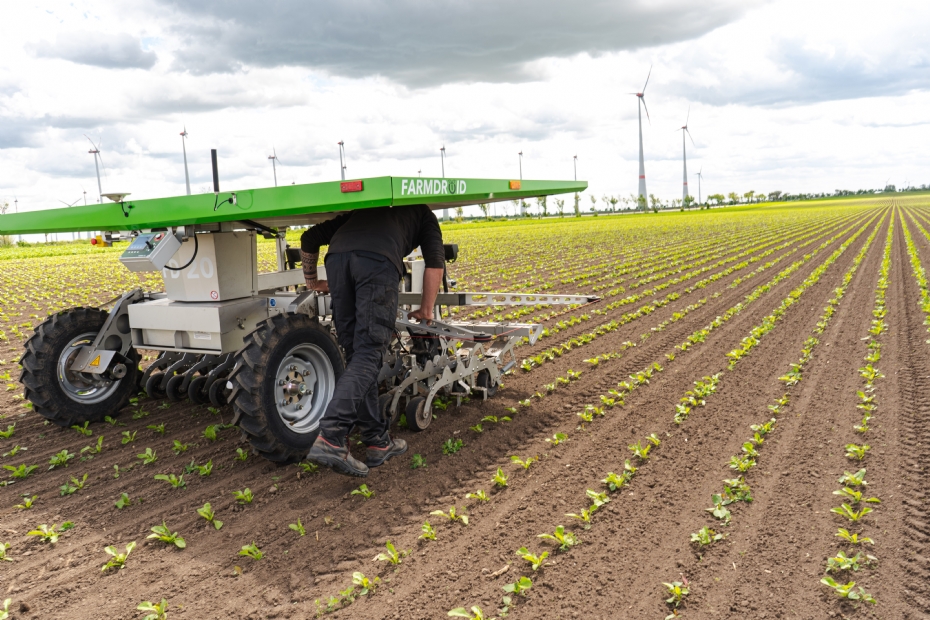 | | The Danish FarmDroid |
|
|
FarmDroid
Agriculture and horticulture lead tree cultivation in the development of robot technology. The FarmDroid FD 20 from Danish FarmDroid ApS is an example of an autonomous machine that can perform two tasks. You can use it to sow, and later in the young cultivation, autonomously remove weeds. This is all without camera or sensor systems. The FarmDroid remembers the seed grid and therefore knows exactly where it needs to chop. Danish agriculture and horticulture embrace these robots; as soon as you can sow something with this machine, you can also weed or chop with it. In addition to crops such as onions, sugar beets, spinach, and various herbs, it is possible to sow beech nuts, acorns, and chestnuts in a row with this machine. This also applies to sunflowers and other cut and ornamental crops that we count as part of tree cultivation.
Viticulture
There is also considerable activity in viticulture in terms of robotization. For example, the German Robot Makers developed a robot that autonomously drives through the vineyard and mows the grass. The machines are built based on customer demand. A low center of gravity makes the machine suitable for working on serious slopes. The French Vitirover also builds an autonomously driving machine for mowing narrow paths in viticulture, fruit cultivation, and tree cultivation. The 20 kilo heavy 4wd machine works with a roughly 30 centimeter wide lawn mower-like mowing unit and drives a maximum of 300 meters per hour. In viticulture, one machine per hectare is sufficient. VitiBot in Reims, France, is also active in this market. Since 2015, the goal of this company has been to deploy its Bakus technology for sustainable viticulture. VitiBot has two types of vineyard robots: one for narrow and one for wide inter-rows. The robots autonomously hoe in the rows and even between the vines.
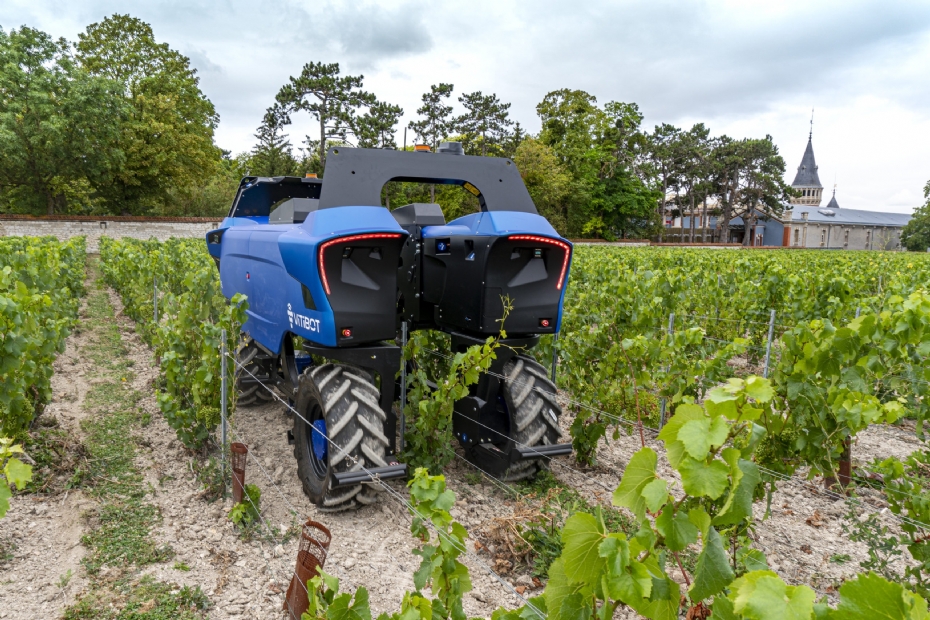 | | The Bakus S, suitable for narrow inter-rows |
|
|
Definition of robot
What exactly is a robot? Simply put, a robot is a programmable machine that performs tasks autonomously. According to this definition, an ATM and a potting machine can also be called a robot, but what these devices cannot do is respond to environmental factors. Robots can do that. They often have sensors such as cameras, thermometers, and light meters, to adapt their program if necessary based on the environment in which they work. More information about potentially interesting robot initiatives for tree cultivation can be found on the following websites: www.abemec.nl, www.farmdroid.dk, www.Naïo-technolgies.com, www.robotmakers.de, www.vitirover.fr, and www.vitibot.fr.
|
This article was previously published on February 14, 2025, on the website of Boom In Business.
| Boomkwekerij Udenhout B.V... | |
| |
| LOG IN
with your email address to respond.
|
|
|
| There are no comments yet. |
Tip the editors
|
| |
Anyone can place small ads for free through their own account.
Place a free ad
|
|
|
|